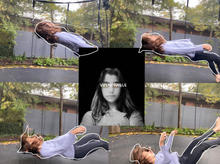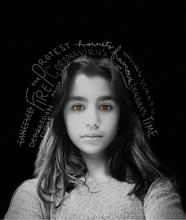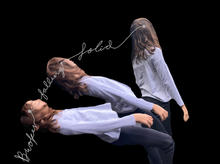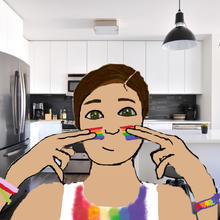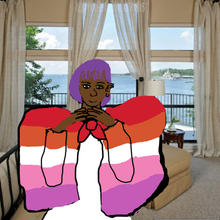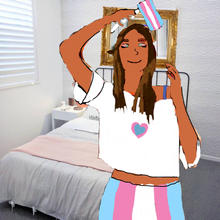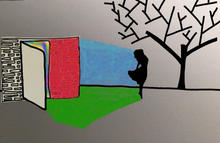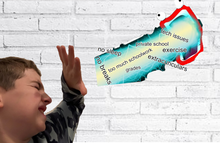Graduate Research PDF: Creating Mindful Learners In Postmodern Art Classrooms
Graduate Research PDF: Creating Mindful Learners In Postmodern Art Classrooms
Graduate Research PDF: Creating Mindful Learners In Postmodern Art Classrooms
Pedagogy into Practice: Shifting the Visual Arts Curriculum to an Online Space
6th Grade Unit 1: Identity Portraits





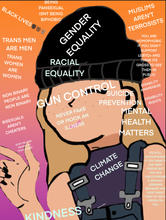




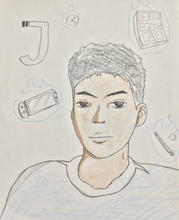
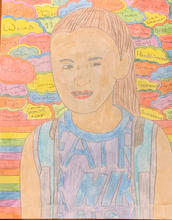



One of the biggest concerns I faced starting the 2020-2021 school year virtually was deciding how to effectively build relationships with my students. What better way to get to know my students than to provide them with the open-ended prompt to create an image that represents their personal identities. Students enter middle school with varying degrees of artistic skills. Due to the nature of virtual learning, students also had the chance to create a digitally based artwork using their own prior knowledge and skills. We looked at artists Kehinde Wiley, Glenn Ligon, and Frida Kahlo for our close studies. Students brainstormed aspects of their own identities and practiced creating a portrait of a role model as formative assessments. They spent time critiquing each others' works-in-progress in a discussion forum and final works during synchronous learning classes. Last, students wrote an artist statement that reflected on the process of creating an artwork and shared the concept behind their individual works. View slide deck here.

Above (left to right) Frida Kahlo, Glenn Ligon, and Kehinde Wiley
Selection of Student Artist Statements:
Response to Identity Portraits Unit
"I have 2 concepts for my art. The first is about stereotypes. That is why I colored my skin pink, and all the unrealistic colorings. Like the shamrock, that is pink, because the “Irish” stereotype, isn’t the truth at all. The second concept is kindness. The fact that the background is dark, and everything else is a bright color that pops out, is me trying to have the colors represent the kindness I am trying to spread into the dark world. It shows my identity by trying to explain that I am not what I may appear to be. My symbolism with the book, and music note, and heart, express what I enjoy, and the things and ideas that shape my identity into what it is. When creating the background, I experimented with black and brown watercolors with my fingers, and not a paintbrush. It was challenging for even me, to work beyond my own stereotypes, that I almost had made to be my identity. I loved working on a piece of art, where I didn’t need any artistic skill, and being able to do what I felt was right for me. If I were starting over, I would have made it a lot neater, and added some material things that are important to me, such as a newspaper clipping, or letter."
"My self-portrait represents me by its eyes, shirt, and background, the big eyes represent the number of things I can see and understand. And the background shows the black and white, which represents the situations I can go through successfully, and the situations, that I can learn from which are the white spots. Most people would think to label the things we don’t know as black, but to me a 'black spot' is something that is already discovered and remembered. But with white you could think of it as the light of a flashlight, discovering new things with each shine into the dark."
"My concept is a visual of what I identify myself with. I simply did a rough draft with a pencil, I made sure to shade it lightly, so I could go and erase any mistakes I might have encountered. Then, I traced the lines with crayons and colored the empty spots in with various colors. I made sure to add what I enjoy (Music, Specific Animals, Tennis, Boybands, Food along with my favorite apps), I also added what I believe identifies me (Adventurous, Empathetic, Balanced, Risk-Taker, fun and caring). I included my background culture (Ethiopian-American). The unit so far has been a tremendous journey through new paths and learning experiences. I personally haven’t learned much about this topic until now, I am glad that you have introduced it to us. It was quite challenging keeping up with the homework, but of course, it's because we were all new to it and its the process from moving to Elementary School to Middle School."
"The idea of my identity portrait is to represent what makes me ME. Not just my race and gender but smaller things like my closest friends and podcasts I enjoy. I used pencils and a black marker. I’m wearing a bold red lip to represent how I go boldly into the world. I’m wearing an oversized t-shirt with a long sleeve shirt under because that's how I mainly dress. I finished off the piece with things that build me from my sexuality to my favorite quote. Overall I loved the concept of the unit and the process. Seeing how famous artists such as Frida and Glenn did a similar thing in a very different and unique way. I was unsure at times when it came to digging deep and exploring all aspects of myself. I also asked for feedback from family as well as neighbors which inspired me to add the words in that format as my background. Throughout the process I experimented with doing what you said about expressing parts of our identities that aren’t so good. That helped me put my piece in perspective. If I were to do it again I would try harder to express every part of me to really show how I am. I’m eager to know how I would’ve expressed it."
6th Grade Unit 2: Digital Art Explorations
Lesson 1: Social Justice Zines
My students are yearning for ways to become advocates for social change. The combination of the COVID-19 health pandemic and the Black Lives Matter protests for racial equity have necessitated spaces for them to both process these events and use their voice to spread awareness and advocacy. As part of a district-wide interdisciplinary cornerstone unit, students embarked on a digital art assignment and designed a hand-drawn or digital zine that provided information about a social justice issue of their choice. This assignment also gave students an opportunity to express and process their current emotions as well as envision a better life in the future.
Lesson 2: Memes in Art
Memes can be used to engage in critical discourse about visual culture. We can embed knowledge about stereotypes and art versus cultural appropriation through analysis and creation of memes. Lastly, we can develop tools to express our emotions and relate to each other. In my classes, students discussed the various types of memes, including image edit and pop culture memes and then practiced making their own. Next students looked at a case study about a white American woman who wore a traditional qipao to her prom. As a result, her prom photos went "viral" and a new hashtag and meme series was created -- "My Culture Is Not Your Prom Dress." We discussed the implications of memes as it relates to art appropriation and defined cultural appropriation as it related contextually to this case study.
For the last assignment within this lesson, students defined stereotypes and then created a "Starter Pack Meme" to create a digital collage based on a stereotype of a specific group or about their own identities.
Student Created Memes




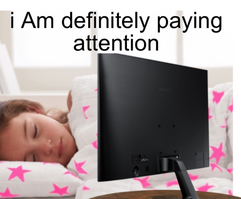

Art vs Cultural Appropriation


Above: Google Images
Starter Pack Memes




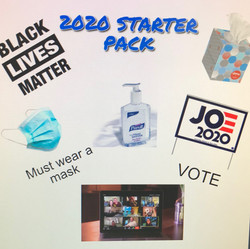


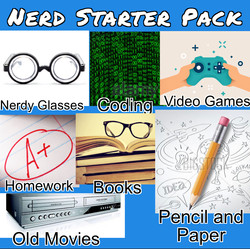

Student Created Process Video
Lesson 3: Choice Based Digital Art Project
The unit culminated in a choice based final project where students chose a topic and format to develop a long term plan for a work of art. For synchronous learning classes, students learned a variety of digital editing techniques in photography, video, and digital drawing. They looked at the surrealist photographer Erik Johansson and learned about the photographic rules of composition. Certain students were selected as leaders and timekeepers to lead and facilitate small group critiques in breakout rooms. Students needed to submit brainstorming prompts and rough drafts of their artwork and artist statement in order to learn how to effectively manage and plan for a long term assignment. The following themes and topics are listed below:
Pick ONE of the following themes for your final project:
A) Describe a problem or social issue in the world (Women's Rights, Black Lives Matter, COVID-19, etc.)
B) Compare & contrast the indoor and outdoor world
C) Narrate a sibling, family member, friend or pet's day to day life
D) Illustrate a story that brings humor and joy to the world
Pick ONE format for your final project:
A) Photojournalism: Photo collection of 10-15 images that tell a clear story - sequenced with captions in a PowerPoint or Google Slides presentation
B) Stop-Motion Video: Video about 1 minute in length that tells a clear story
C) Video: Video about 2 minutes in length that tells a clear story
D) Digital Drawings: A series of 2 or more digital drawings with added color
E) Altered Photographs: A series of 2 or more photographic collages or hand-altered photographs



